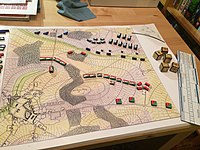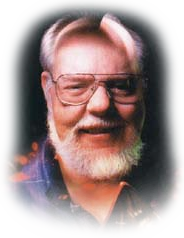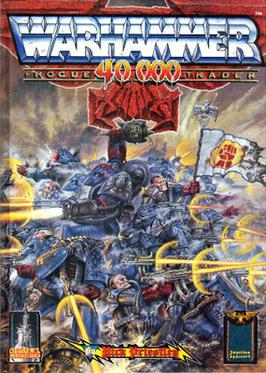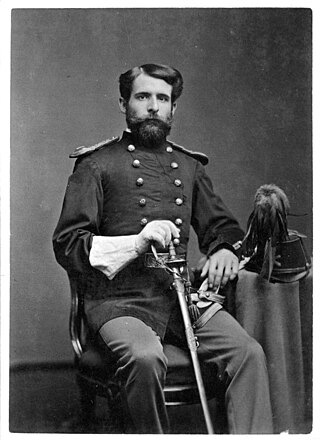| Part of a series on |
| Wargames |
|---|
 |
|
|
A fantasy wargame is a wargame that involves a fantastical setting, and employs rules for elements such as magic and non-human intelligent creatures.
| Part of a series on |
| Wargames |
|---|
 |
A fantasy wargame is a wargame that involves a fantastical setting, and employs rules for elements such as magic and non-human intelligent creatures.
The rise in popularity in wargaming of the 1950s through to the 1970s largely coincided with the rise in popularity of J. R. R. Tolkien's The Lord of the Rings novel. While wargaming was initially focused on historical subjects, other subjects also emerged. In the late 1960s, linguist M. A. R. Barker began to use wargame-like sessions to develop his fantasy creation Tékumel. [1] In 1970, the New England Wargamers Association demonstrated a fantasy wargame called Middle Earth at a convention of the Military Figure Collectors Association. [2] The fantasy supplement to Chainmail (1971) led to the development of the role-playing game Dungeons & Dragons . Fantasy writer Greg Stafford created the board wargame White Bear and Red Moon to explore conflicts in his fantasy world Glorantha, though it did not see publication until 1974.
In 1983, Bryan Ansell, Richard Halliwell, and Rick Priestley created a fantasy wargame titled Warhammer. The game took place in a fantastical world full of elves,ogres,demons, orcs and dwarves, alongside armies of lizard men and later on, rat men known as skaven. Players collected armies based on these races and battled using a ruleset that revolved around the results of die rolls. Warhammer soon became extremely popular among wargamers, and in 1987, a new warhammer game was released under the title: Warhammer 40,000. It used some races from the original, but took place in space. [3]

A wargame is a strategy game in which two or more players command opposing armed forces in a realistic simulation of an armed conflict. Wargaming may be played for recreation, to train military officers in the art of strategic thinking, or to study the nature of potential conflicts. Many wargames recreate specific historic battles, and can cover either whole wars, or any campaigns, battles, or lower-level engagements within them. Many simulate land combat, but there are wargames for naval and air combat as well.

Warhammer 40,000 is a miniature wargame produced by Games Workshop. It is the most popular miniature wargame in the world, and is particularly popular in the United Kingdom. The first edition of the rulebook was published in September 1987, and the 10th and current edition was released in June 2023.

Games Workshop Group is a British manufacturer of miniature wargames, based in Nottingham, England. Its best-known products are Warhammer Age of Sigmar and Warhammer 40,000.

David Lance Arneson was an American game designer best known for co-developing the first published role-playing game (RPG), Dungeons & Dragons, with Gary Gygax, in the early 1970s. Arneson's early work was fundamental to the role-playing game (RPG) genre, pioneering devices now considered to be archetypical, such as cooperative play to develop a storyline instead of individual competitive play to "win" and adventuring in dungeon, town, and wilderness settings as presented by a neutral judge who doubles as the voice and consciousness of all characters aside from the player characters.

Miniature wargaming is a form of wargaming in which military units are represented by miniature physical models on a model battlefield. The use of physical models to represent military units is in contrast to other tabletop wargames that use abstract pieces such as counters or blocks, or computer wargames which use virtual models. The primary benefit of using models is aesthetics, though in certain wargames the size and shape of the models can have practical consequences on how the match plays out.

A campaign setting is usually a fictional world which serves as a setting for a role-playing game or wargame campaign. A campaign is a series of individual adventures, and a campaign setting is the world in which such adventures and campaigns take place. Usually a campaign setting is designed for a specific game or a specific genre of game. There are numerous campaign settings available both in print and online. In addition to published campaign settings available for purchase, many game masters create their own settings, often referred to as "homebrew" settings or worlds.

Warhammer is a tabletop miniature wargame with a medieval fantasy theme. The game was created by Bryan Ansell, Richard Halliwell, and Rick Priestley, and first published by the Games Workshop company in 1983.

Fantasy Warlord is a fantasy miniatures game released in 1990 by Folio Works. It was written by Ian Bailey and Gary Chalk who also did the illustrations.

Middle Earth Strategy Battle Game, previously marketed as The Hobbit: An Unexpected Journey Strategy Battle Game, The Hobbit: The Desolation of Smaug Strategy Battle Game, The Hobbit: The Battle of Five Armies Strategy Battle Game and The Lord of the Rings Strategy Battle Game, is a tabletop miniature wargame produced by Games Workshop. It is based on The Lord of the Rings film trilogy directed by Peter Jackson, and the book that inspired it, written by J. R. R. Tolkien.

The history of role-playing games begins with an earlier tradition of role-playing, which combined with the rulesets of fantasy wargames in the 1970s to give rise to the modern role-playing game. A role-playing game (RPG) is a type of game in which the participants assume the roles of characters and collaboratively create stories. Traditionally all the participants but one take on characters and determine the actions of their characters based on their characterization and the actions succeed or fail according to a system of rules and guidelines, and one of the participants takes on the role of game master who narrates the story, plays all the non-player characters and determine the challenge rating and the outcome of various actions. Within the rules, the participants may improvise freely; their choices shape the direction and outcome of the games.

Warhammer 40,000: Rogue Trader is the first edition rule/source book for the Warhammer 40,000 miniature wargame by Games Workshop. The subtitle "Rogue Trader" was dropped in subsequent editions.

Warhammer Ancient Battles is a ruleset for miniatures wargames produced by Games Workshop's Warhammer Historical Wargames imprint. It is a rulebook for historical wargames developed from the popular Warhammer Fantasy Battle by Jervis Johnson, Rick Priestley and the Perry brothers. On 24 May 2012, Warhammer Historical closed their website and are now defunct.
David Wesely is a wargamer, board game designer, and video game developer. Wesely's developments, inspired by Kriegsspiel wargames, were important and influential in the early history of role-playing games.
The Midwest Military Simulation Association (MMSA) is a group of wargamers and military figurine collectors active during the late 1960s and 1970s.

Naval wargaming is a branch of the wider hobby of miniature wargaming. Generally less popular than wargames set on land, naval wargaming nevertheless enjoys a degree of support around the world. Both historical and fantasy rulesets are available.

A board wargame is a wargame with a set playing surface or board, as opposed to being played on a computer or in a more free-form playing area as in miniatures games. The modern, commercial wargaming hobby developed in 1954 following the publication and commercial success of Tactics. The board wargaming hobby continues to enjoy a sizeable following, with a number of game publishers and gaming conventions dedicated to the hobby both in the English-speaking world and further afield.

A wargame is a strategy game that realistically simulates warfare. Wargames were invented for the purpose of training military officers, but they eventually caught on in civilian circles, played recreationally.

Strategos is a military wargame developed by Charles A. L. Totten for the United States Army, and published in 1880.